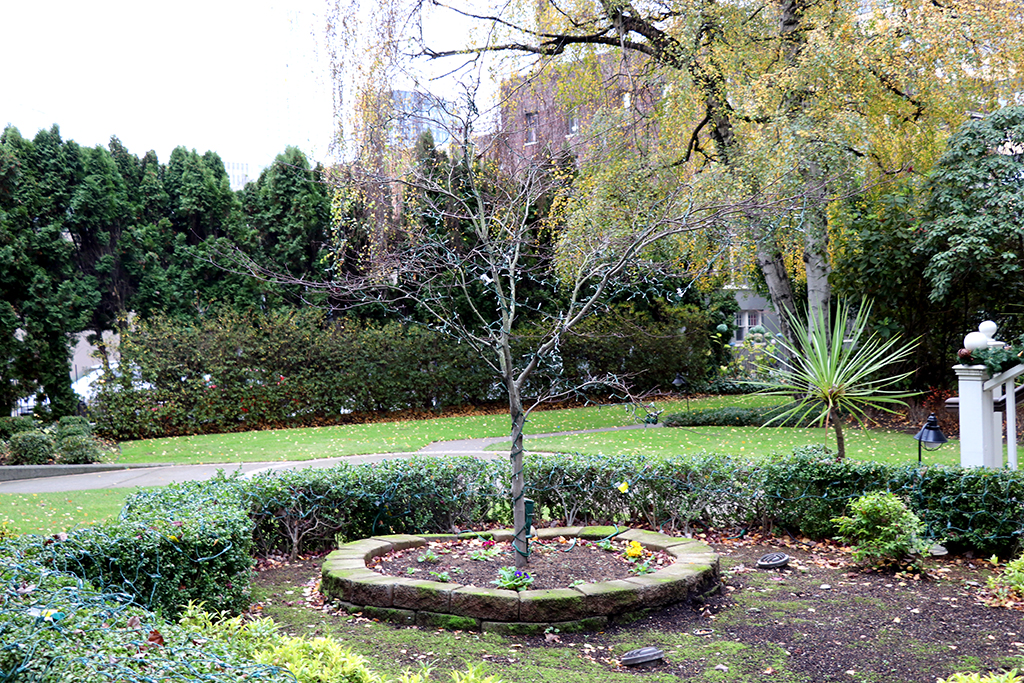-
Stacy House (now University Club)
1004 Boren Avenue
Walk up Madison to Boren. This is the last surviving Queen Anne Victorian house on First Hill. The original 1889 residence sits in the center of the lot; a 1906 dining and billiard room annex faces Madison Street, as does a newer entrance.
Martin van Buren Stacy had large real estate holdings and an elegant home downtown, built in 1884. The First Hill house reputedly was the interest of his wife Elizabeth, who is credited with partially designing it. She took up residence there to be closer to her friend, Emily Carkeek, while her husband preferred to remain in the center of things. The house reflects the penchant for mid- to late-19th century houses to have a rich combination of square and angled bays, gables, dormers, chimneys, scalloped decorative shingle, and millwork. It has been the University Club since the turn of the twentieth century, when it was purchased by a club member and rented to the club with an option to buy, which they did in 1919. The private men’s club was formed in Seattle by young male graduates of eastern universities. Seattle architect Charles Bebb is reputed to have introduced the club, and Seattle, to the martini cocktail.
In the vicinity:
SUNSET CLUB. Three blocks north, on the west side of Boren at University Street is the Sunset Club, a private women’s club. The brick Georgian Revival style clubhouse was constructed according to designs by Joseph Coté in 1914-1915.
CARKEEK RESIDENCE (demolished). Directly across Madison from the Stacy house is the site of the Carkeek mansion, built in 1884 and the second house on First Hill. The house was built from plans by the New York firm of Palliser and Palliser for Morgan J. Carkeek, an early Seattle contractor. The Victorian home was the scene of some of the most important social events for Seattle society. Emily Carkeek was the founder and president of the Seattle Historical Society, which later became the Museum of History & Industry. The home was razed in 1934, but the original iron gate was saved and now serves as the entry to the University Club. The 13-story Swedish Medical Center was constructed on the site in 1994; a permanent exhibit on First Hill history can be found in the lobby of the building and a stained-glass window from the Carkeek mansion is on display.



